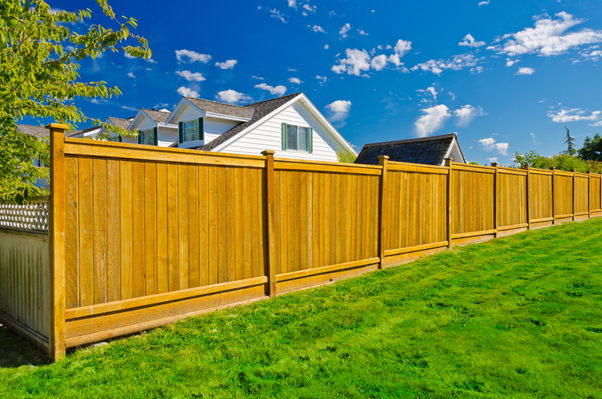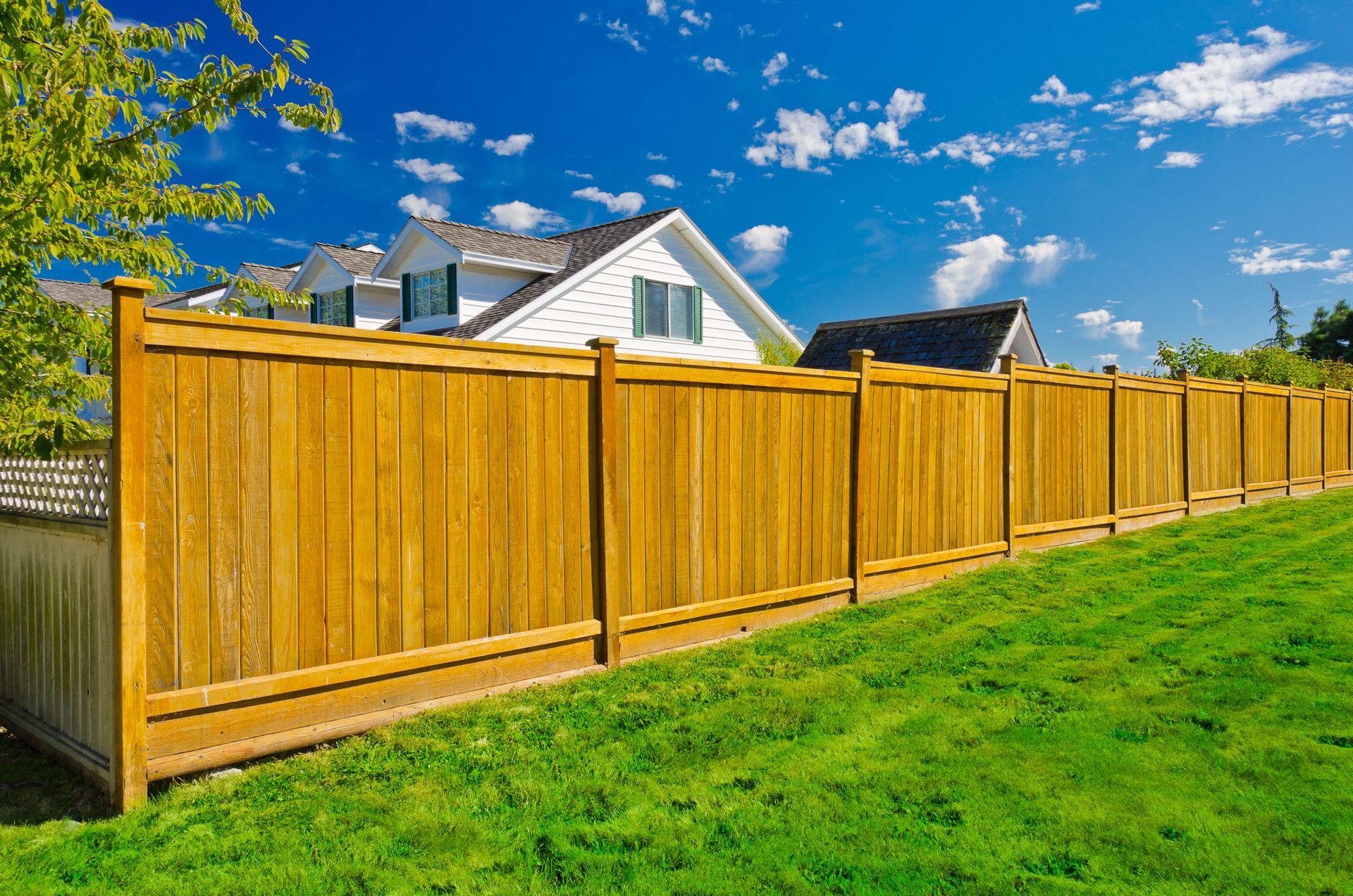All Categories
Featured
While a tall fencing may appear like the best option, the optimal height depends on a number of factors, including protection requirements, neighborhood regulations, and the products used. Listed below, we'll lay out vital factors to consider to aid you choose the perfect fence height for ideal safety.
![]()
If you stay in an area controlled by a home owners' organization (HOA), you need to additionally review any kind of certain guidelines they have for fencing elevation, style, and products. Following these laws guarantees you avoid lawful problems and keep an excellent connection with your next-door neighbors.
Taller fencings are harder to scale and can substantially reduce the chance of burglaries. Including functions like sharp tops, barbed cord, or also electric fencing can additionally enhance the obstacle's security. A fencing that reaches 8 feet or greater is usually effective at preventing most people from quickly leaping over it.
![]()
Wood Fencings: While wooden fencings provide privacy, they can be easy to climb up, specifically if there are no anti-climb features. For optimal protection, consider a wooden fencing that's 6 to 8 feet tall with sharp tops or trellis extensions that make it harder to scale. Chain-Link Fences: Chain-link fences are commonly much more economical and sturdy than timber, and they can be developed to the needed height for protection. To enhance deterrence, take into consideration including barbed or razor wire on top. These functions discourage climbing and make the fencing much more difficult to violation. Wrought Iron Fencings: Wrought iron fences are usually made use of for high-security functions due to their strength and sturdiness. Their vertical bars make it difficult to climb up, and they can be constructed to 6 to 8 feet high with additional spikes or ornamental anti-climb attributes to more protect the boundary. Vinyl Fencings: Plastic is an outstanding selection if you require a strong, private fencing, but like wood, plastic fencings may require additional elevation or security features to discourage climbing. Opt for a fencing that is at least 6 feet high to make sure privacy and safety and security. Each material uses different benefits in regards to visual appeals, resilience, and maintenance, so it is very important to consider your certain needs and preferences when choosing a fence.
Anti-Climb Functions: Setting up pointed or sharp tops, trellis expansions, or security spikes on top of the fencing makes it more tough for anyone to scale the fence. These functions function as a solid deterrent to potential burglars. Barbed or Razor Cord: Including barbed cord or razor cord on top of your fence raises security significantly. This is typically used in high-security areas, such as industrial residential or commercial properties, but can likewise be a good option for houses in high-risk areas. Electric Secure fencing: For top-level security, you might intend to consider including an electric fencing to your residential or commercial property. Electric fence, when mounted appropriately, can develop a strong deterrent while remaining relatively very discreet. It provides a light shock to anybody who attempts to climb up the fence or touch. Combining height with these extra attributes makes certain that your fencing supplies the greatest level of safety and security.
Stabilizing the demand for privacy and safety and security while preserving the visual allure of your home can help you select the appropriate height and product for your fencing. Ensure that your fencing matches the general style of your home and doesn't negatively affect the visual appeal.
![]()
By meticulously taking into consideration all these aspects, you can produce a secure, exclusive, and appealing boundary around your residential property that offers both comfort and defense.

- Understand Local Regulations and Zoning Rules. The initial action in selecting your fence elevation is to acquaint on your own with regional policies. Typically, front lawn fences are restricted to 3 to 4 feet, while backyard fencings can be as tall as 6 to 8 feet or more.
If you stay in an area controlled by a home owners' organization (HOA), you need to additionally review any kind of certain guidelines they have for fencing elevation, style, and products. Following these laws guarantees you avoid lawful problems and keep an excellent connection with your next-door neighbors.
- Determine the Desired Degree of Security. The degree of protection you require is a significant element in figuring out the suitable fencing height. A fencing elevation of 6 to 8 feet is generally advised for optimum protection.
Taller fencings are harder to scale and can substantially reduce the chance of burglaries. Including functions like sharp tops, barbed cord, or also electric fencing can additionally enhance the obstacle's security. A fencing that reaches 8 feet or greater is usually effective at preventing most people from quickly leaping over it.
- Choose the Right Product for Your Fence. The product of your fencing plays a vital role in its capacity to give safety and security. While taller fences are better for safety, the kind of material you make use of can impede the performance or enhance of the elevation. Below are some popular fencing materials for safety:

Wood Fencings: While wooden fencings provide privacy, they can be easy to climb up, specifically if there are no anti-climb features. For optimal protection, consider a wooden fencing that's 6 to 8 feet tall with sharp tops or trellis extensions that make it harder to scale. Chain-Link Fences: Chain-link fences are commonly much more economical and sturdy than timber, and they can be developed to the needed height for protection. To enhance deterrence, take into consideration including barbed or razor wire on top. These functions discourage climbing and make the fencing much more difficult to violation. Wrought Iron Fencings: Wrought iron fences are usually made use of for high-security functions due to their strength and sturdiness. Their vertical bars make it difficult to climb up, and they can be constructed to 6 to 8 feet high with additional spikes or ornamental anti-climb attributes to more protect the boundary. Vinyl Fencings: Plastic is an outstanding selection if you require a strong, private fencing, but like wood, plastic fencings may require additional elevation or security features to discourage climbing. Opt for a fencing that is at least 6 feet high to make sure privacy and safety and security. Each material uses different benefits in regards to visual appeals, resilience, and maintenance, so it is very important to consider your certain needs and preferences when choosing a fence.
- Include Security Features for Additional Security. While height is necessary, including extra safety features to your fencing can enhance its performance. Think about the following enhancements:
Anti-Climb Functions: Setting up pointed or sharp tops, trellis expansions, or security spikes on top of the fencing makes it more tough for anyone to scale the fence. These functions function as a solid deterrent to potential burglars. Barbed or Razor Cord: Including barbed cord or razor cord on top of your fence raises security significantly. This is typically used in high-security areas, such as industrial residential or commercial properties, but can likewise be a good option for houses in high-risk areas. Electric Secure fencing: For top-level security, you might intend to consider including an electric fencing to your residential or commercial property. Electric fence, when mounted appropriately, can develop a strong deterrent while remaining relatively very discreet. It provides a light shock to anybody who attempts to climb up the fence or touch. Combining height with these extra attributes makes certain that your fencing supplies the greatest level of safety and security.
- Consider Personal Privacy and Aesthetic Preferences. While safety and security needs to be your primary problem, it's also vital to think about the visual charm of your fencing. High fencings may give safety and security, but they can in some cases show up enforcing or unfriendly. If privacy is an issue, a strong timber or vinyl fencing can offer both safety and seclusion, while a wrought iron fence supplies security with an open sight.
Stabilizing the demand for privacy and safety and security while preserving the visual allure of your home can help you select the appropriate height and product for your fencing. Ensure that your fencing matches the general style of your home and doesn't negatively affect the visual appeal.

- Last Ideas on Fencing Height and Security. Selecting the appropriate fencing elevation for optimum security entails balancing several variables, consisting of local policies, the degree of safety and security needed, the material of the fence, and added safety and security functions. In basic, a fencing elevation of 6 to 8 feet is excellent for a lot of residential homes, with taller fences offering an added layer of protection for risky areas.
By meticulously taking into consideration all these aspects, you can produce a secure, exclusive, and appealing boundary around your residential property that offers both comfort and defense.
Latest Posts
Change Your Home with Top Quality Flooring Solutions
Published Apr 19, 25
1 min read
Siding Solutions for a Magnificent, Energy-Smart Home
Published Apr 19, 25
1 min read
Easy Coin Conversion with Coinstar and WyHy Federal Lending Institution
Published Apr 18, 25
1 min read